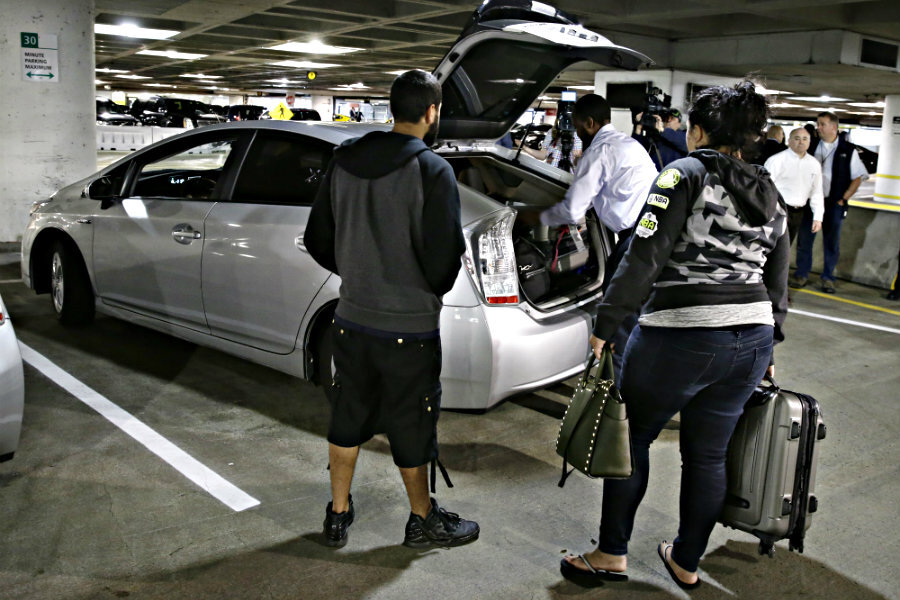Why Uber faces a price surge lawsuit
Loading...
On Thursday, a federal judge denied a motion to dismiss the class action lawsuit against Uber’s CEO, Travis Kalanick.
The lawsuit alleges that Mr. Kalanick conspired to increase prices on days with high volume Uber use, such as New Year’s Eve (otherwise known as surge pricing). Uber made headlines this year, when a single ride on New Year’s Eve cost Uber app users up to $200.
Surge pricing rose so high on New Year’s, when many people were unwilling (or unable) to drive themselves, that fares reached up to nine times their normal rate, reports ABC News.
An Uber spokeswoman told ABC News that app users have the ability to monitor surge pricing and make decisions based on costs.
"Riders are repeatedly notified about the pricing directly within the app and asked to confirm and accept increased fares, or can opt for a notification when prices drop," said the spokeswoman.
Is surge pricing so bad?
After all, other industries, including airlines and hotel chains, set prices based on demand during high traffic times, including holidays like New Year’s and school break vacation rushes. Everybody knows that flights cost more at Thanksgiving than they do in the middle of October.
Uber has faced complaints about surge pricing for some time. In 2014, a board director at Uber, Bill Gurley, wrote a post on the Uber Newsroom website, explaining and defending the business’s dynamic pricing.
Uber, Gurley wrote, must necessarily engage in surge pricing due to the nature of its business. Unlike airline pilots, Uber’s drivers are independent contractors (a designation that has caused another set of legal issues for the ride sharing company), and they can choose when they want to work, which means that drivers need greater incentives to work at times that users want rides most.
“There is one key difference that materially increases the need for dynamic pricing in Uber’s case. With hotels, airplanes, and rental cars, supply is relatively fixed,” wrote Gurley. “Uber has a problem these companies do not. At the exact time that riders want more availability – Friday and Saturday night, in a bad storm, on New Year’s Eve – drivers would rather not be driving.”
This case is about more than simple surge pricing, however. The plaintiffs in this year’s class action lawsuit, Meyer v Kalanick, U.S. District Court, Southern District of New York, No. 15-09796., allege that Kalanick actually conspired with drivers to drive up prices. The lawsuit does not name Kalanick’s company, Uber, as a defendent.
“Were it not for Mr. Kalanick’s conspiracy to fix the fares charged by Uber drivers, drivers would have competed on price and Uber’s fares would have been ’substantially lower,’” the lawsuit claims.
US District Judge Jed Rackoff said that such a conspiracy was plausible. He also indicated that plaintiffs could claim that Uber’s price fixing drove out similar ride sharing companies such as Sidecar, according to Reuters.
“The advancement of technological means for the orchestration of large-scale price-fixing conspiracies need not leave antitrust law behind," wrote Rackoff.
Although Judge Rackoff nixed a motion to dismiss the suit on Thursday, Uber continues to claim that it has done nothing wrong.
“These claims are unwarranted and have no basis in fact,” an Uber spokeswoman wrote by email. “In just five years since its founding, Uber has increased competition, lowered prices, and improved service.”
Some say that Uber has little to worry about.
“One always has to worry about lawsuits, but this one is so far-fetched that I wouldn’t lose much sleep over it if I were Uber,” Columbia Business School Professor Evan Rawley told Bloomberg. “However, if the plaintiff won, it would indeed be potentially costly to Uber since it would interfere with how the core of their business operates.”
Uber is also facing a class-action lawsuit in California, led by Uber drivers who claim that, despite Uber's "independent contractor" designation, they are actually Uber employees.








